Astrology Book Reviews
Only the must-haves are featured here!
We occasionally recommend and link to products/services we genuinely believe will be highly valuable or create more insight in the matter. Some of these links could potentially make us some money. If you question some of the value or reliability of the recommendations/services, please, contact us !
On this page we list all our English astrology book reviews.
Read our reviews of what we find the best French astrology books.
And/or check our reviews of what we find the best German astrology books.
And/or take a look at our reviews of what we find the best Dutch astrology books.
Many, many people asked us for reliable resources to study serious astrology that works.
No psycho blah blah, but empirically researched astrology you can trust as there is so much chaff among the wheat.
Well now, our astrology book reviews section just hopes to bring you all that; top-notch astrology books full of empirical research that make THE difference.
In our opinion, no serious astrologer or student in astrology should be without the books we review below.
Don't expect any ratings because, with the below listed astrology book reviews, be assured that they earn our highest rates and scores!
The books presented below are important because of their unique, valuable and reliable content, not because they have a beautiful cover -- which they most often have not ;)
Some books may be rather difficult for the novice astrologer to start with, but understand that real astrology is not simple too!
You better jump into this exciting topic with reliable books rather than easy to follow theoretical concepts that leave you empty afterwards.
So, don't be afraid to read them, even if you are a beginner.
The list and reviews will be updated, so check back regularly again.
The below listed English astrology book reviews are presented in no particular order of preference.
| Astrology Book | Reviews |
|---|---|
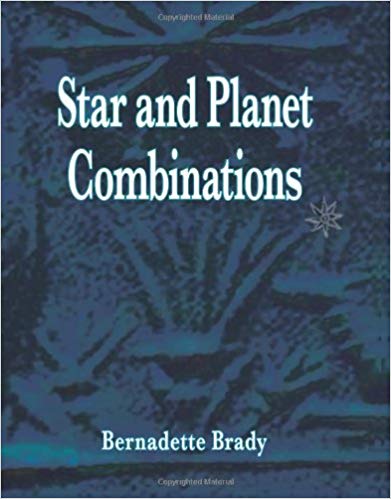 |
Bernadette Brady Star and Planet Combinations. All Bernadette Brady's books are very well-researched and highly important landmarks for the astrological community. In this book the author describes 64 Fixed Stars related to the natal planets according to ancient methods that have been used with infallible success during the ages: the parans and the heliacal rising and setting stars. There are not that many "modern" reliable and well-worth books about the Fixed Stars. Don't underestimate the importance of the Fixed Stars. The research done by Bernadette Brady is highly remarkable and so awesome. What's more, she has found delineations that are not too vague, but also not too "harsh" (most ancient textbooks are depressingly negative about Fixed Stars). This work is a major contribution to the real meanings and the essence of the brightest 64 Fixed Stars. |
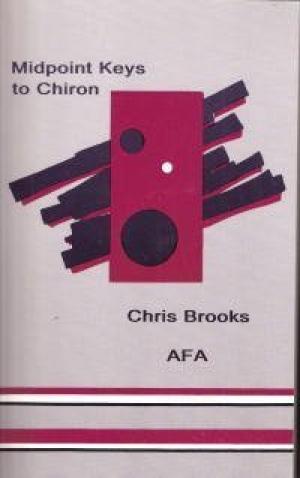 |
Chris Brooks Midpoint Keys to Chiron A compilation of many years research about two exciting topics: cosmobiology (midpoint analysis) and Chiron. We rave about this little gem; only 98 pages but packed with empirical researched results and methods. A must-have and an all-time favorite for advanced astrologers interested in midpoints! |
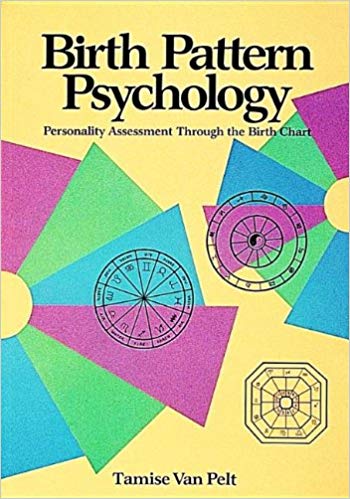
|
Tamise Van Pelt Birth Pattern Psychology: Personality Assessment Through the Birth Chart Tamise Van Pelt presents a new way of personality assessment through astrology. The book is based on seven years of research, analyzing some thousands of birth patterns with case histories. Her assessment can withstand psychological assessment methods. Her book learns self-acceptance through our astrological birth pattern. Tamise presents objective, valid and reliable measurements to uncover the masks people wear, how to spot divided personalities, one's temperament and behavior and one's needs. Actually, her book is all about personality assessments in an objective context so that it can be used as a valuable and valid testing method following very strict and objective rules. |
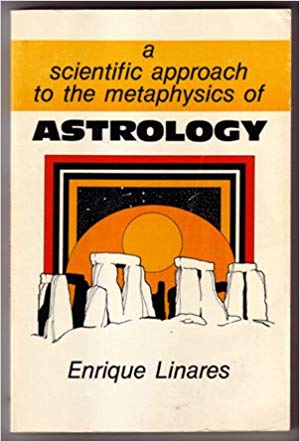 |
Enrique Linares A Scientific Approach to the Metaphysics of Astrology The author, who is a chemical engineer, starts from the septenary cycles which can be found in many ways in our world (from the Pyramids of Cheops or Teotihuacan, to body chemistry or the micro-world of particles and atoms etc.). He also mentions for the first time an innovative and very important predictive technique based on individual cycles found in the solar returns. It's a pity this highly important discovery is not yet featured in any software program. His impressive findings related to the solar return charts make this book a goldmine of information that needs to be researched further, kept alive AND should be incorporated in astrological software. |
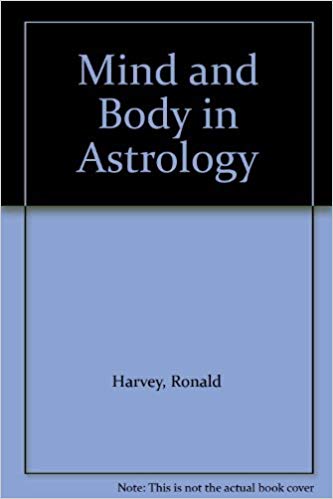 |
Ronald Harvey Mind and Body in Astrology This book is about astrology related to psychosomatic or medical issues but also of great importance to very accurate character traits and basic astrological principles and thinking. The symbolism and structure are not only logical but also very consistent throughout the book. Empirical research is used all over. |
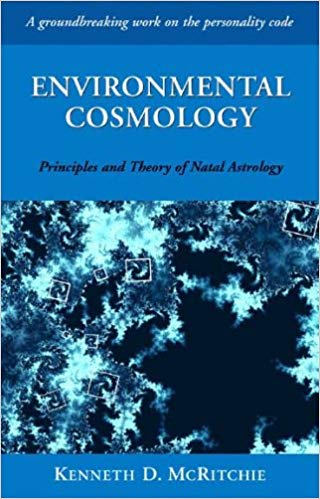 |
Kenneth D. McRitchie Environmental Cosmology: Principles and Theory of Natal Astrology Recent findings in chaos theory, statistics and psychology are compared with astrological principles and very often coincide. The structures of astrology are investigated with common sense and meaningful patterns of the planetary macrocosm related to patterns in the microcosm of the individual. |
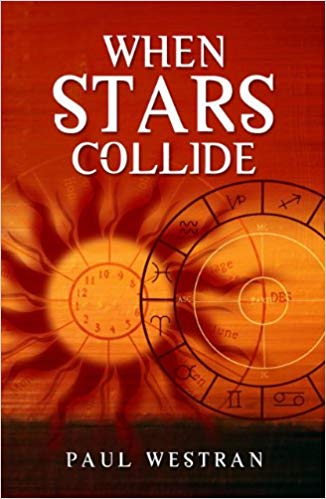 |
Paul Westran When Stars Collide: Why we love, who we love and when we love them The author is a former police crime analyst who has spent many years researching factors that affect relationships. In this groundbreaking book, Paul Westran researched how, why and when relationships start and/or end. To gain understanding of astrology, he uses a four-dimensional "moving and growing" concept instead of a fixed and static concept. Everything changes, and so do relationships. Through his extensive research the secondary progressed chart shows accurately how we change through life and that's why this method has been used in his empirical research too. In fact, the author clearly found a stunning case for astrology, even if this was, at first, not his intention or goal. His method should be incorporated in any serious astrological software and be used in synastry and compatibility analyses. We already discussed his findings in our Love Letter #22 from September 21, 2006. |
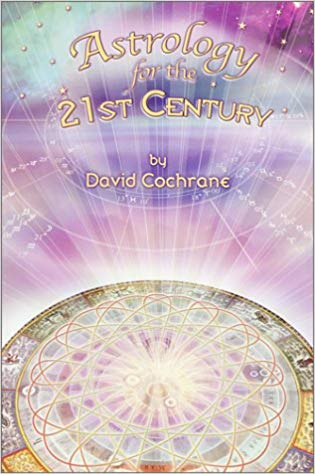 |
David Cochrane Astrology for the 21st Century David Cochrane presents different astrological principles but sheds a new light on it, based on his own research and findings. It goes from the simple delineations of the zodiac signs to more complex techniques like the Harmonics, degree meanings and chart comparisons (among others). He was right to start with skepticism when he followed astrological methods and in his book he's able to share accurate concepts, sometimes in a very refreshing and insightful new way. |
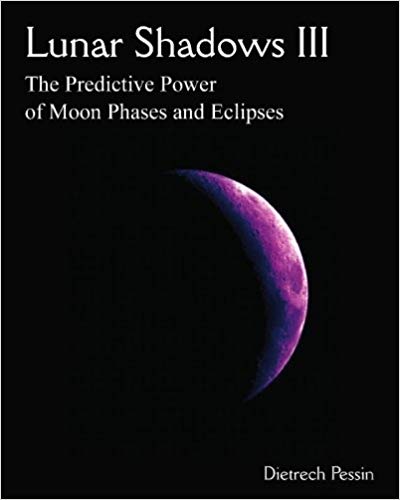 |
Dietrech J. Pessin Lunar Shadows III: The Predictive Power of Moon Phases & Eclipses This book is an eye-opener and again shows how everything is inter-woven and cyclical. From her experience as a 900-line astrologer who had to instantly make "predictions", she learned to see planetary cycles and patterns. Ditrech Pessin discovered that the Moon phases are just part of a larger picture/pattern that itself is cyclic. She demonstrates the direct link between the common Moon phases and the Solar and Lunar Eclipses (the so called Moon Families). This book is the most important one about Eclipses and cycles ever written and researched. Moreover, she also devotes a whole chapter on delineating a chart by providing top-notch references and tools that really work. We recommend that beginners too study her book as it is very extensive and describes even basic astrological principles that are so often forgotten or misunderstood. |
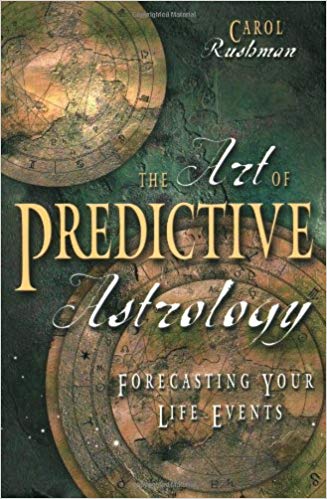 |
Carol Rushman The Art of Predictive Astrology Though this book is about predictive astrology, the author also delves deeper into some highly important natal configurations. Carol Rushman makes it clear that what is not promised in the natal chart (life's potential) will never manifest (the so-called natal promise). To time astrological predictions, she first tries to understand the psychological makeup of the client by looking at some specific natal drivers. You will learn what to look for (in cases of marriage, career etc..) so that even novice astrologers and students may become familiar with spotting the most outstanding factors in a natal chart for a specific life event. You will not find her rules in other astrology books and her assessments are truly spot-on and based on long experience and empirical findings. She then looks at the secondary progressions and especially to the progressed Moon which is one of the most (if not THE most) important timers. Also, the aspects to the house cusps are relevant. The transits and lunations/eclipses then follow and end this outstanding work that should be on everyone's bookshelf, close at hand. |
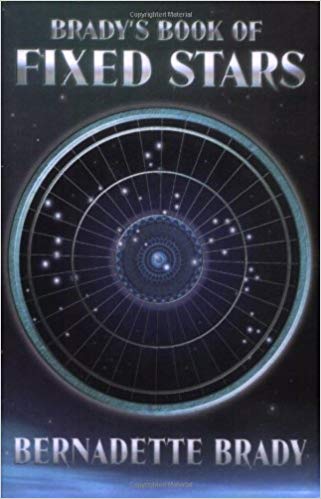 |
Bernadette Brady Brady's Book of Fixed Stars In this quite heavy book of 450+ pages, Bernadette Brady has published what is perhaps the most revealing astrology book about Fixed Stars ever written. What's more, she has blended her own meticulous research about the major stars with mythology and ancient methods (the parans, heliacal risings and acronychal settings) delivering an almost encyclopedic work about this most often neglected astrology tool that the Fixed Stars are. Her delineations shed a new light on the way Fixed Stars work in natal and predictive astrology. It will give much more insight into the personalities you may analyze. |
 |
Bernadette Brady Predictive Astrology: The Eagle and the Lark (2022 edition) The 2022 edition is just a reprint of the 1992 and 1999 editions, with an added foreword. We were a bit disappointed there were no new additions and even no correction with regards to the start of the December 4, 2021 Solar Eclipse Saros Cycle 5 South that differs from the official NASA catalog of Solar Eclipses (as found out by Federico Flueckiger). Anyway, don't get us wrong, this book contains quite some eye-openers. For the first time, an astrologer, Bernadette Brady, delineated the Eclipses using the Saros Cycle they belong to. Though we still doubt if this is the way to delineate Eclipses, it's an interesting point of view to start from the original Eclipse. Our experience has shown that there is something onto it, but sometimes the delineations do not seem to work out as described. That's why we don't find this the best part of her book (but other astrologers surely will ;) What we like most in this groundbreaking book, is the way the author provides a very systematic approach to predict events by blending progressions and transits by means of a Time Map. Also, she delves into the basic meaning of the aspects that you will not find anywhere else and she gives specific keywords for delineating transiting pairs. This book is about key notes and essential principles or key principles in predictive astrology and short but very to the point interpretations. Some other interesting chapters discuss the planetary returns and retrograde transits. Essential reading for sure! |
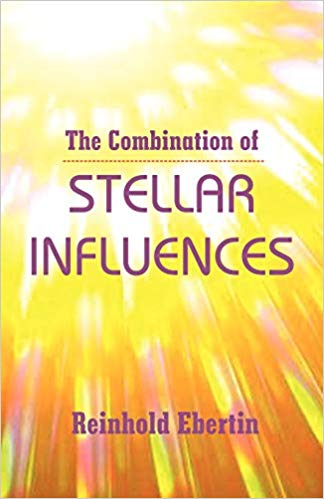 |
Reinhold Ebertin The Combination of Stellar Influences Let's start with a bold statement: astrologers who don't use the midpoints are NO serious astrologers. Exact midpoints (with an orb of 0°00'-0°01') determine the whole life, a life long... If you're not familiar with midpoints, don't worry. This book starts with a short description of what midpoints are and how to delineate them. In this masterpiece, every midpoint combination (blending the meaning of three points/planets/bodies) can be found -- making this book a real reference work for daily use. Unfortunately, Chiron, the Vertex, Pars Fortuna etc. are not listed as the Cosmobiological School, founded by the Ebertins, do not cover these points. Some people residing in the USA or in English speaking countries that advocate "free will", may possibly find the descriptions quite depressive and deterministic. However, this book is based on empirical research with real lives and that's what planet Earth is about: it's not (always) plain sailing at all ;) If you want to prove the validity of astrology start with this one and learn everything about planetary pictures, planetary geometry etc. If you're willing to live in reality, you will find the descriptions to be spot-on. Astrologers who cannot bear this should not study astrology at all. Indeed, the confrontation with an inconvenient reality can be quite hard and disappointing; especially if you are used to follow more conventional convenient lies and illusions. On the other side, real astrology raises consciousness and learns to keep a sobering outlook on life and all its events without becoming self-righteous, self-important, self-complacent, haughty and thus inhuman. Though there are other astrology books on the market that explain midpoints and planetary combinations too, none of them have been able to go as deep and profound as this one, written by the founders of the German Cosmobiological School. Interestingly, you can use this book to interpret the common planetary aspects too and you will find lots of insight in the descriptions for different levels and manifestations (psychological, medical, sociological/mundane etc...). |
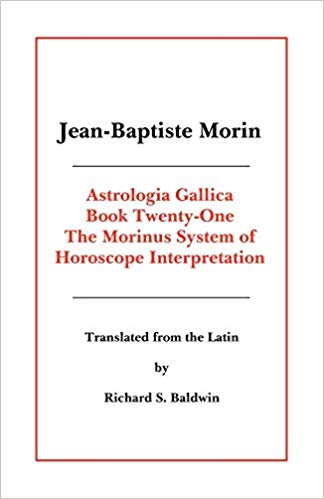 |
Jean-Baptiste Morin (Morin de Villefranche) Astrologia Gallica Book 21 Morin de Villefranche was a physician born in the 16th Century and appointed Royal Mathematician to King Louis XIII. He's possibly the most renowned French astrologer of all times and a highly accurate one too. His stunning predictions make your jaws drop, but if you know his method, it will not surprise you. His method is fully described in this English translation of the original Latin text of Book 21 (translated by Richard S. Baldwin). His method is VERY systematic and there is lots of logic and consistency in it. In our opinion, it should be possible to build a software program around it. If you are able to study Morin's fundamental astrological principles you will have mastered one of the most reliable and accurate scientific astrological methods that exist. You will see how accurate your forecasts and predictions will be. There is also another version available by Zoltan Mason and translated by Lucy Jane Freeman Little who graduated Magna Cum Lauda with Honors in Ancient Greek from Bryn Mawr College. This version is called Astrosynthesis and also includes the Centiloquium (Hundred Aphorisms) of Claudius Ptolemy. |
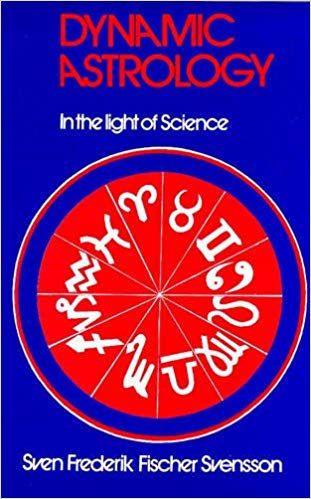 |
Sven Frederik Fischer Svensson Dynamic Astrology: In the Light of Science In 1951, the German astrologer E. H. Troinski "discovered" a new key for directing the planets and points in the natal chart. He found that the key of "one tropical month after birth equals a mean solar day after birth" brought stunningly accurate predictions. In plain English the key boils down to saying that "one rotation of the Moon equals one rotation of the Earth." His method of directing the planets and points was called Tertiary Directions I (or TDH I as the abbreviation for Tertiary Directional Horoscopes I). Later, a second key was derived from it and called Tertiary Directions II (TDH II). The word "Tertiary" followed the Primary Directions (which are based on the rotation of the Earth on its axis, or the first movement, with the key: "one degree equals one year.") This method was mentioned by Ptolemy and is based on astronomical facts. An exact time of birth is mandatory to have reliable predictions. The Tertiary Directions also followed the Secondary Directions (commonly called "Progressions") that are based on the second movement of the Earth or its revolution around the Sun. The key here is "one day equals one year." This method was discovered by the astronomer and mathematician Johannes Kepler in 1610. E. H. Troinski published his findings in 1958 with numerous future mundane forecasts to support his methods which, unfortunately for him, did seldom materialize or manifest. Because most of Troinski's mundane forecasts that were based on his findings about the Tertiary Directions failed, his method has not been used by many astrologers. However, some astrologers re-examined Troinski's findings using natal charts and horoscopes of human beings to find out the effectiveness of the Tertiary Directions regarding real life events. So it happened that a Danish astrologer, Sven Frederik Fischer Svensson, heard about Troinski's Tertiary Directions and wanted to know if they were valuable in predicting the time of his marriage. To his amazement, on the day of his marriage, the Sun and Venus were conjunct in the Tertiary Directions I. This book is all about his findings that scientifically prove the Teriary Directions I are an important and highly accurate astrological predictive tool. He made it a lifetime investigation to scientifically (statistically) prove that marriage can be seen in the Tertiary Directions I and that this predictive method should be used for individual/personal events rather than for mundane events. |
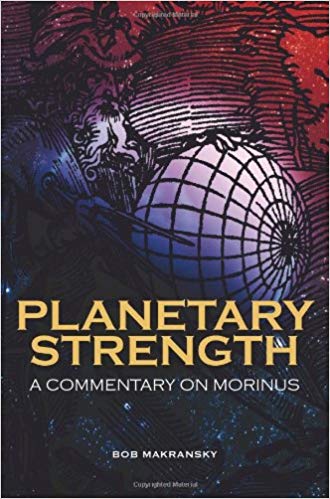 |
Bob Makransky Planetary Strength: A Commentary on Morinus In his book, Bob Makransky brings a refreshing look on the medieval principles propagated by Morin (Morinus) de Villefranche in his Astrologia Gallica (see above). The medieval methods primarily rely on the planetary strength in signs and houses and the aspects the planets make. Makransky's delineations are often spot on and a very welcome addition to reading and interpreting the translated texts. While we do not always agree with everything he writes, we have found this book invaluable to reading natal charts. The author describes methods that are forgotten for too long. His contribution to analyzing a horoscope is remarkable. For the first time in the astrological literature, you will find reliable delineations of stationary planets, well-placed or "afflicted" planets, angular planets, unaspected planets and the Ascendant rulerships, among others. His writing and language (use of words) may not appeal to everyone but the content of this book is still a very welcome gem. |
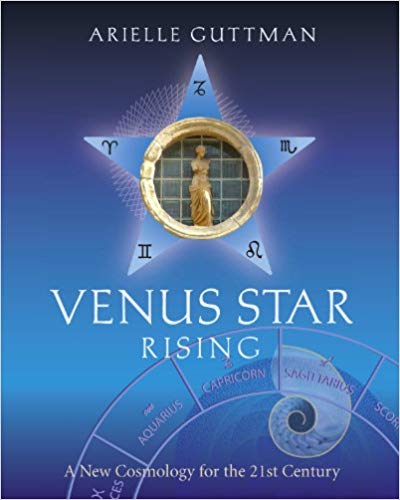 |
Arielle Guttman Venus Star Rising: A New Cosmology for the 21st Century This is an eye-opening book and a very insightful, innovative and well-researched one too! It's not about the common Venus positions etc. but about the Venus Star Positions (VSP). The VSP refer to the 5 points of the pentagonal pattern that Venus weaves as it moves about its orbit every eight years. The author's research showed that historical events on Earth mirror the pattern of the Venus Star. Her book explores how the Venus Star works in our natal charts but even more importantly, how the Venus Star also affects collective human consciousness and historical timelines through its zodiacal star points. In this really groundbreaking book, Arielle Guttman not only insight-fully describes the geometry of the Venus Star, its mythology and influence on the personal and historical realm, but she also addresses its influence on relationships and marriage. You will be in awe to read how the Venus Star Point connects you to your partner, family members etc. Also, she blends the Venus Star with the Chinese elemental division to uncover who feeds who or who is fed by whom and who is the giving partner and who is the receiving one. Here's hoping that the author's findings will be incorporated in all major software programs because her findings are another milestone in astrological research and demonstrate without any single doubt how planetary geometry, cycles and patterns affect us all personally and collectively. |

|
Michele Finey Sacred Dance of Venus & Mars This is another groundbreaking and very well-researched book in which Michele Finey delves into the Venus-Mars phases. She not only describes the different Sun-Venus, Sun-Mars and Venus-Mars phases in detail but goes further to uncovering the 32-year Venus-Mars Synodic cycle which she compares with another kind of 'Saros Cycle'. Her descriptions are highly accurate and spot on! By presenting this book, the author shows that astrology is finally changing and evolving from a static way of assessing charts (the aspects) to a more dynamic, evolutionary and more insightful one (the planetary phases). This as such brings another dimension and higher level of consciousness into astrology. This book is another gem that proves that modern astrology, if well researched and based upon facts and real situations, is a real science. Life really unfolds in cycles. |
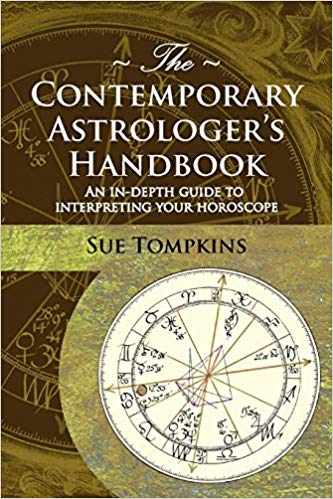
|
Sue Tompkins Contemporary Astrologer's Handbook This is a very in-depth guide to interpreting your natal chart that you will consult often. The book contains all the basics necessary to interpret your horoscope realistically and thoroughly (planets in signs, planets in houses and the planetary aspects, among others). The delineations given by Sue are valuable and to-the-point, even professional astrologers can learn a lot from these. They are spot-on and show Sue's enormous practical experience analyzing horoscopes. If you're looking for one single astrology book that contains all the basics in a concise but yet in-depth way, aside from Kevin Burk's Understanding the Birth Chart, this book should be on your desk. So, even if you are new to astrology, this book is a must-have to start your journey and consult often and use for quite a long time. |
| Social Media |
| Search Our Web Site |
| Disclosure Statement |
| Subscribe To Our Monthly Newsletter (Love Letter) |
More information about the Newsletter





